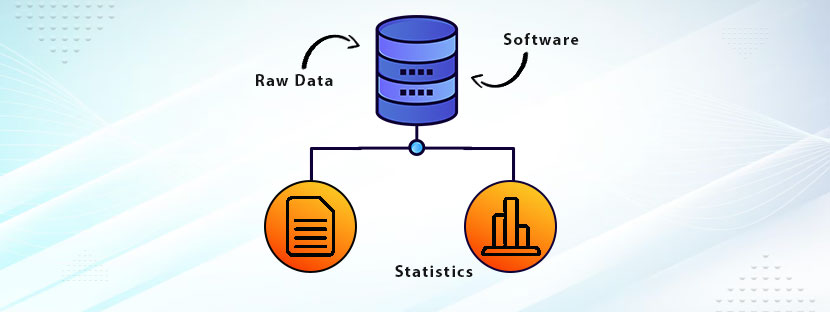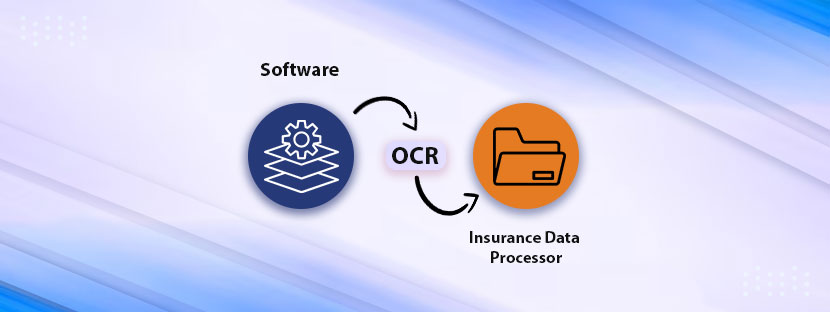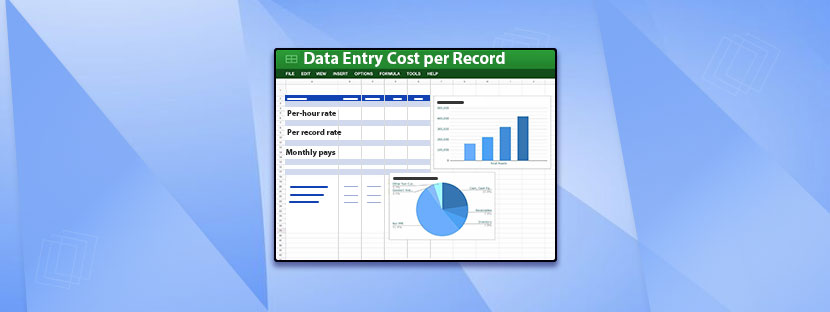In This Article
Are you ever concerned about errors in your medical records? However, medical or healthcare data entry services can help prevent errors and improve data accuracy. Now, for example, you recently had a medical procedure and recorded incorrect information. Meanwhile, it can result in inaccurate diagnosis and treatment. Although, by double-checking entries, using validation tools, and implementing quality control measures, these services ensure your data is accurate and reliable. Indeed, these services also follow data entry standards for data precision.
They train their staff on proper data entry techniques and definitely regularly update their software to stay up-to-date with the latest technology. Besides, conducting audits allows identify any errors or inconsistencies in the data. Surprisingly, with accurate data entry services, you can have peace of mind knowing your medical records are accurate and trustworthy.
Some Common Errors in Medical Data Entry
The healthcare industry always develops an extensive amount of data daily. Undeniably, any small error in the data can harm the patient’s health, cause financial losses, and then even damage the reputation of healthcare. Simultaneously, medical mistakes are one of the top causes of death in most countries. At this time, we will discuss some typical healthcare data entry mistakes below. Hence, to improve data accuracy, you should overcome these barriers:
Before discussing minimizing data entry errors, subsequently consider the challenges in ensuring genuine data-driven care.
Challenges to Performing Real Data-Driven Care
Unstructured Data
The healthcare sector has vast data to handle – from labs, small clinics, physicians, hospitals, government hospitals, and more. Data can be structured or unstructured, e.g., in a table or text form. Structured data is viewed in tables that are easy to understand, whereas unstructured data can be lengthy and challenging for data analysis. According to a survey, healthcare providers generate approximately 2 billion new medical notes annually. These data should be interoperable and examined when required. This data may be prone to error. Implementation of ICD-10 codes increased the error rate from 20 to 50 percent. To improve data accuracy, you should overcome this error. Due to immensely few interoperable technologies and tools, the amount of unstructured data is growing, and the amount of data loss is also increasing.
Poor Understanding of the Proper Data
Accurate data can add value to patients’ lives and to those who provide care to patients. Data should be meaningful and help clinicians manage patients’ acute and chronic conditions. Physicians know what makes data meaningful that hides in the incomplete, unstructured data visible through electronic medical records. Physicians have to see the data entry standard correctly. Also, accurate information is essential for them to provide quality patient care.
Legacy System and its Consequences
Patient data is not freely available to patients. The data is only released for a fee. However, the correct data should be open and user-friendly in a data-driven world. With the right technology, data processing and refinement becomes easy, and you can also avoid 5 million medical notes per day and enhance data accuracy.
How do You Improve Data Accuracy with Medical Data Entry Services?
Medical data quality is the main thing to any health organization’s success. One must understand the implications of healthcare data accuracy issues and take steps to address them. Listed here are some of the key ways in which you can im
Double-Checking Medical Data Entries
Double-check all healthcare data entry service entries to ensure data accuracy. This process involves cross-referencing entries and error detection, which is necessary for maintaining high-quality data. When cross-referencing entries, you compare the data entered with existing documents or suitable sources to ensure consistency and validity. It helps in detecting any inconsistencies or errors during the data entry process. By carefully reviewing each entry, you can identify and correct errors such as misspellings, incorrect dates, or incorrect medical codes.
Additionally, implementing error detection techniques, such as using automated software or creating data validation rules, can further improve the accuracy of entries. These techniques can flag potential errors, such as missing or inconsistent data, allowing you to make immediate corrections. By including a double-checking process that provides for cross-referencing entries and error detection, you can significantly decrease the chance of errors and confirm the integrity of medical data by data verification.
Utilizing Validation Tools
Improve data accuracy in healthcare data entry services using validation tools. These tools are crucial to ensure the information entered is accurate and reliable. Here are three methods of verification techniques and data entry software that can improve your data accuracy:
Implementation of Quality Control Systems
Ensure data precision in healthcare data entry services by implementing quality control systems. Quality control systems are vital to preserving the accuracy and integrity of medical information. A robust quality assurance program can help identify and prevent defects before they become significant problems and enhance data accuracy.
An important quality control measure is the use of double data entry. It involves two people independently entering the same data and comparing the results for discrepancies. A second person reviewing the data can quickly identify and correct errors, reducing the risk of recording incorrect information.
Another adequate quality control measure is the implementation of periodic audits to improve data accuracy. Audits can assist in determining patterns or trends in data entry errors, permitting targeted training or process improvements to prevent similar mistakes in the future. Audits can ensure compliance with data entry standards and protocols.
Besides, automated validation checks can assist in detecting and preventing errors in real time. These checks may include data format verification, range checking, and logical validation. By incorporating these checks into the data entry process, you can detect and resolve errors promptly, enhancing data accuracy and decreasing manual intervention requirements.
Training of Team on Proper Data Entry Techniques
Appropriate training is required to guarantee accurate data entry. Each team employee must know the proper techniques and best practices for entering medical data. By avoiding common mistakes and consistently practicing precise data entry, staff can increase overall data accuracy and improve the quality of medical records.
Proper Training Requirements
Train your staff on proper data entry techniques to improve data accuracy in healthcare data entry services. Proper training is vital to confirm your employees understand the importance of appropriate data entry and perform it correctly. At this time, below now we will discuss the most important three reasons why proper training is essential:
Typical Data Entry Mistakes
To improve data accuracy in healthcare data entry services, addressing common mistakes by training your staff in proper data entry techniques is essential. Recognizing and correcting these mistakes can significantly enhance efficiency and lower errors in the data entry process. A common mistake is entering incorrect information due to misreading or misunderstanding. You can avoid this by emphasizing the importance of carefully reviewing and validating data before entering the system.
Another mistake is to ignore data validation checks, leading to incorrect or incomplete entries. You can significantly improve data accuracy by training your staff to pay attention to these checks and ensuring they understand their purpose. Additionally, ongoing training and regular feedback can help reinforce these techniques, reduce healthcare data entry errors, and enhance data accuracy.
Improve Accuracy with Practice
By implementing regular training sessions, your medical data entry staff can increase accuracy through practice and improve their skills in proper data entry techniques. Training staff on adequate practice techniques can significantly reduce data entry errors and improve overall data quality. Here are three essential practices that can help increase accuracy:
Update Software Regularly
Stay ahead of potential data errors by regularly updating your software. Updating technology is crucial to maintaining accurate data entry in medical fields. As technology develops, new components and enhancements are continuously introduced to improve data verification processes.
By regularly updating your software, you confirm that you have access to the latest tools and techniques to verify the accuracy of medical data. These include data entry validation rules, real-time error detection, and automatic data cleansing processes for accurate data entry.
Regular software updates address any security vulnerabilities in older versions. To improve data accuracy, you should prevent cyber security threats. It constantly evolves, and outdated software can leave your system vulnerable to attack. Updating the latest software can safeguard sensitive medical data from potential breaches.
In addition to maintaining data accuracy and security, updating your software lets you utilize new features and functionality. These updates may include improved user interfaces, streamlined workflows, and reporting capabilities. Using up-to-date software, you can optimize your data entry operations and enhance overall efficiency.
Regularly updating your software and transitioning to the next section of audit management lays the foundation for a robust data accuracy strategy. However, it is essential to complement this with regular audits to confirm ongoing compliance and identify potential gaps in data accuracy.
Performing Audits
Conducting audits is crucial to improve data accuracy in healthcare data entry services. Audits provide a systematic way to assess data quality and accuracy, helping identify any errors or inconsistencies. By conducting regular audits, you can ensure that the data entered is accurate and meets required standards, ultimately improving the overall accuracy of medical records.
Benefits of Auditing
An advantage of audits is that they can significantly improve your data accuracy in healthcare data entry services. It includes:
Ensuring Data Precision
To guarantee data accuracy or precision, perform audits on your healthcare data entry services and improve data accuracy. Audits play an essential role in data verification and error reduction. By regularly checking the accuracy and completeness of your data, you can detect any inconsistencies during the data entry process.
Audits systematically review a sample of records to confirm that data is entered correctly and meets the required standards. This process allows you to immediately detect and correct any errors or inaccuracies, ensuring the reliability and quality of information. Besides, audits deliver valuable insight into potential areas for improvement in your data entry procedures, allowing you to improve overall data accuracy and decrease future errors.
Outsourcing medical data entry services can deliver cost-effectiveness and enhanced workflow. It lets you concentrate on core tasks while professionals handle proper and efficient healthcare data entry.











